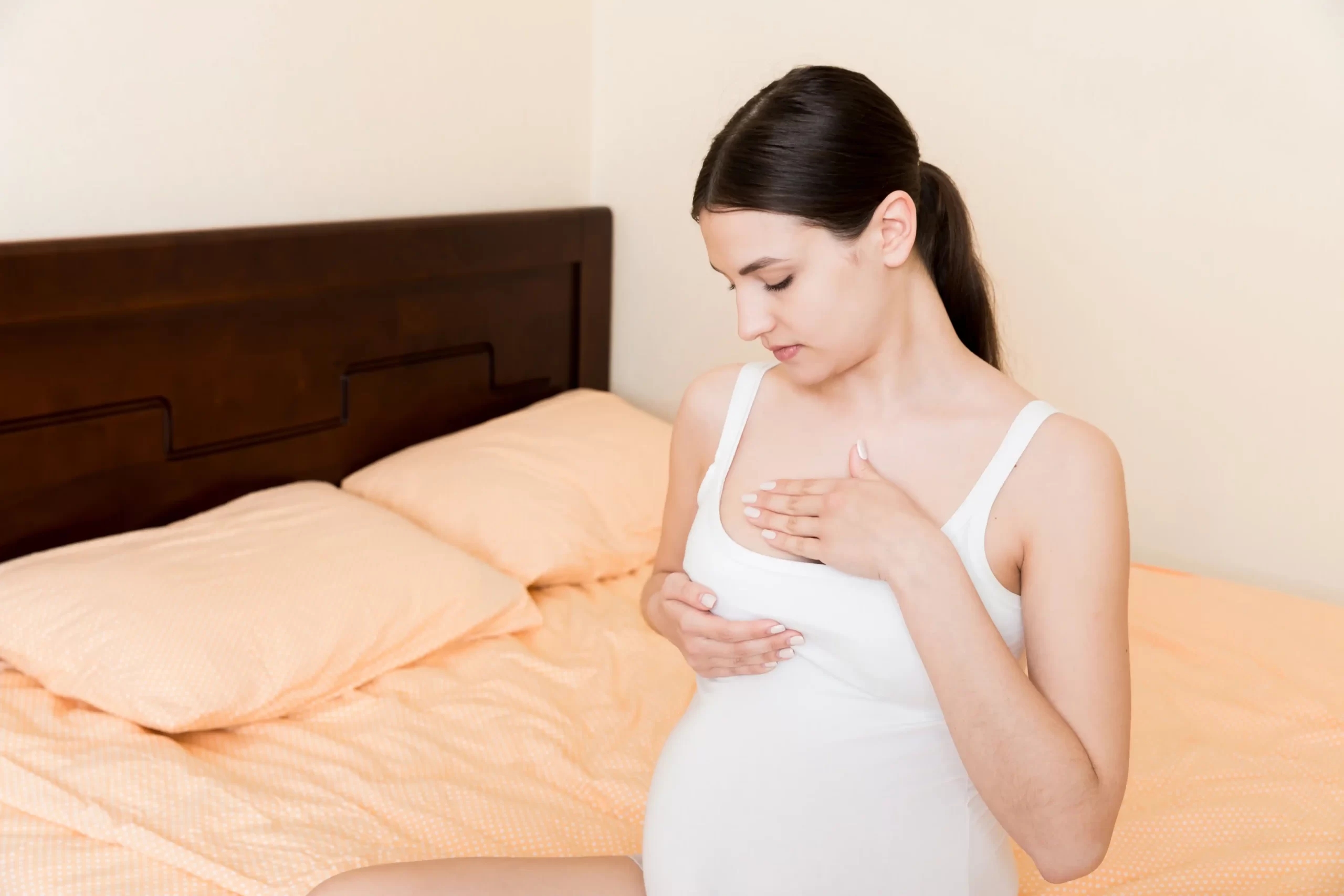Why do breast veins become more visible during pregnancy?
Quick Summary
1.Increased Blood Volume – Pregnancy increases blood flow by up to 50%, making veins in the breasts more prominent.
2.Hormonal Changes – Estrogen and progesterone relax blood vessel walls, causing veins to expand and become visible.
3.Breast Growth – Enlarging breast tissue and stretched skin during pregnancy make veins easier to see.
4.Mostly Harmless – Visible veins are usually normal, but pain, swelling, or redness may need medical attention.
5.Temporary Change – Breast veins often fade after childbirth or breastfeeding, though treatment is available if they persist.
Pregnancy brings about many noticeable changes in a woman’s body, and one of them is the appearance of visible veins on breasts during pregnancy. While it may feel concerning at first, this is a common and natural occurrence. In this blog, we’ll discuss why breast veins become more visible, the causes of breast veins in pregnancy, the science behind these changes, and when you might want to seek medical advice. We’ll also highlight safe treatment options available for women who remain concerned about their appearance.
Why Do Breast Veins Appear More During Pregnancy?
The main reason veins become more noticeable during pregnancy is the body’s preparation to support a growing baby. As blood volume increases to nourish both mother and child, veins expand to carry the extra flow. This change often makes the veins on the chest and breasts stand out more than usual.
In many cases, these visible veins are temporary and fade after childbirth or breastfeeding. However, understanding the reasons for visible veins during pregnancy can help put your mind at ease
Causes of Breast Veins in Pregnancy
There isn’t just one reason behind breast veins appearing more prominently—several physical and hormonal factors contribute. Let’s take a closer look:
-
1. Increased Blood Volume
During pregnancy, a woman’s blood volume can increase by as much as 30–50%. This surge is essential for delivering oxygen and nutrients to the growing baby. Because of this extra workload, veins expand to handle more blood flow. When they enlarge, especially under thin skin on the breasts, they become more noticeable.
-
2. Hormonal Changes
Estrogen and progesterone, the primary pregnancy hormones, play a key role in vascular changes. They cause blood vessel walls to relax and dilate, which improves circulation but also makes veins stand out more clearly. These hormonal shifts are one of the biggest causes of breast veins in pregnancy, especially noticeable in the early and middle stages.
-
3. Breast Growth and Skin Stretching
Breasts begin preparing for breastfeeding early in pregnancy. As milk ducts grow and tissues expand, the skin stretches. Stretched skin tends to become thinner, and as a result, veins underneath are easier to see. This is a very common reason for visible veins during pregnancy, especially by the second trimester.
-
4. Genetic Predisposition
Some women naturally have more prominent veins due to genetics or lighter skin tone. If you’ve always had faintly visible veins, pregnancy may make them stand out even more.
-
5. Circulatory Pressure
As the uterus grows, it puts pressure on blood circulation throughout the body. This can slow blood return to the heart, leading to more noticeable vein enlargement in different parts of the body, including the breasts.
Together, these changes explain why many pregnant women notice new or more visible breast veins. While they may not always be aesthetically pleasing, they are usually harmless and temporary.
Are Visible Breast Veins a Cause for Concern?
In most cases, the appearance of visible veins on breasts during pregnancy is completely normal and nothing to worry about. It’s a physical sign that your body is adapting to carry extra blood volume and support your growing baby.
However, there are situations when it’s important to be cautious and seek medical advice:
- Painful veins: If the veins feel sore, tender, or unusually warm to the touch.
- Swelling or redness: Could indicate inflammation or a circulatory issue that needs attention.
- Sudden changes: If veins become extremely prominent in a short time or appear alongside swelling in other areas, it could point to circulation problems.
- Hard lumps along veins: This may be a sign of thrombophlebitis (a blood clot in a vein), which requires medical evaluation.
While these scenarios are less common, they highlight the importance of not dismissing new symptoms during pregnancy. Even though breast veins are typically harmless, monitoring any sudden or uncomfortable changes is always wise.
If your veins remain visible and concerning after pregnancy or breastfeeding, there are safe, minimally invasive treatments available. For more information, you can explore the breast veins treatment options provided by Center for Vein Wellness.
When to See a Doctor
If your breast veins are unusually painful, warm to the touch, or accompanied by other symptoms like swelling, it’s best to seek medical evaluation. While most changes are harmless, vein specialists can rule out conditions such as thrombophlebitis or varicose veins in the breast area.
Conclusion
Noticing visible veins on breasts during pregnancy is usually a normal part of the body’s adjustment to support new life. The causes of breast veins in pregnancy—such as increased blood flow, hormonal changes, and breast growth—are natural processes. While they may fade after childbirth, specialized treatments are available if veins remain visible and bothersome.
If you’re worried about your breast veins or want professional advice, the team at Center for Vein Wellness is here to help. For personalized guidance, don’t hesitate to Contact us today and take the first step toward peace of mind.
Frequently Asked Question
- Painful veins: If the veins feel sore, tender, or unusually warm to the touch.


